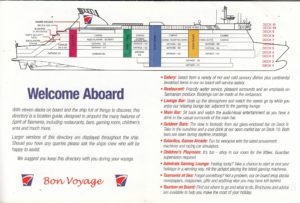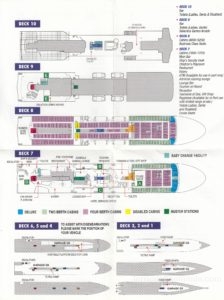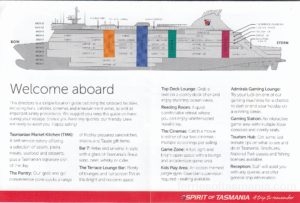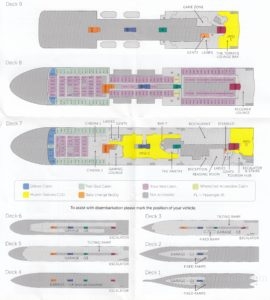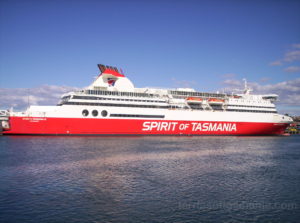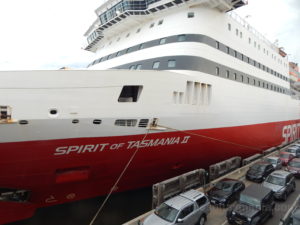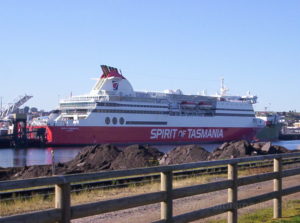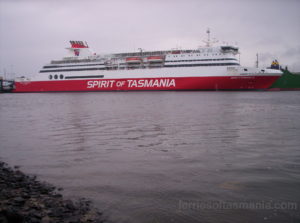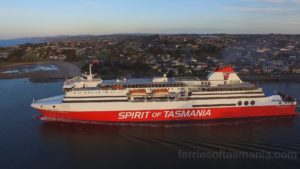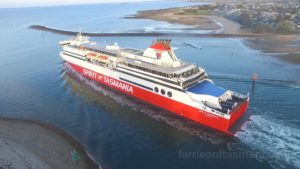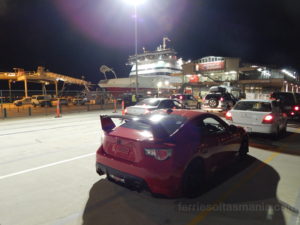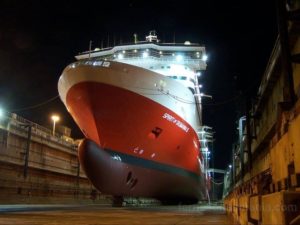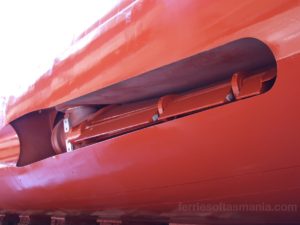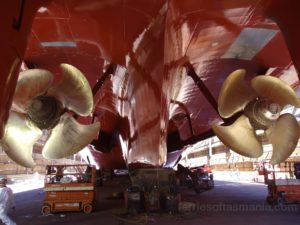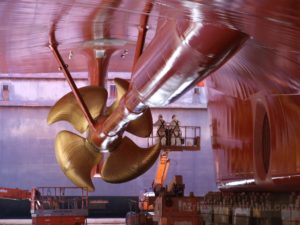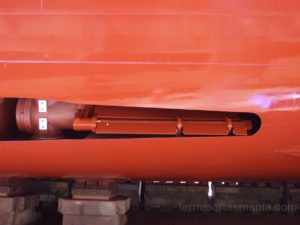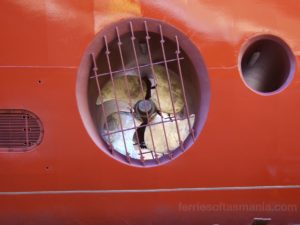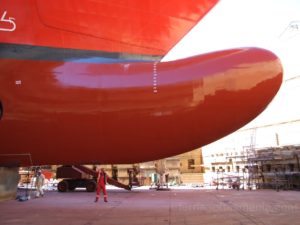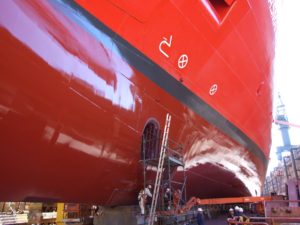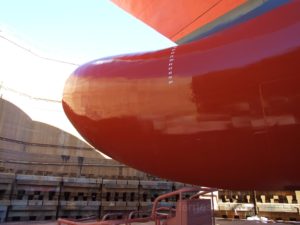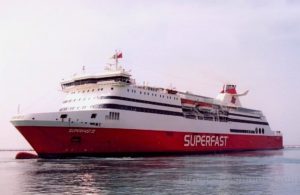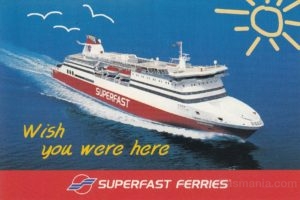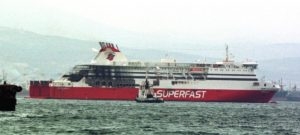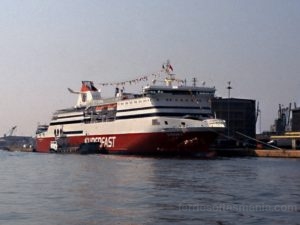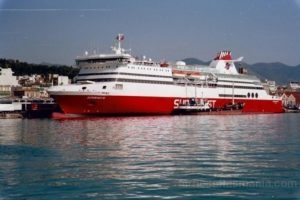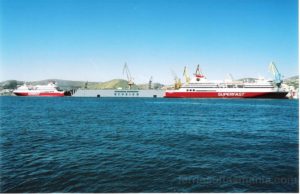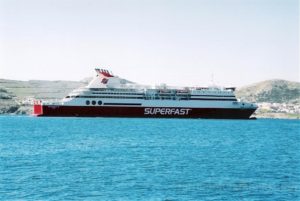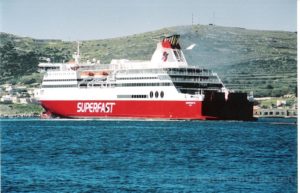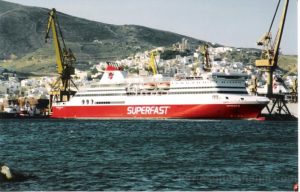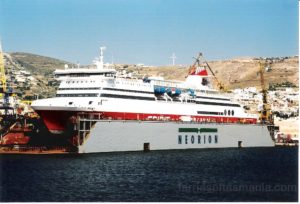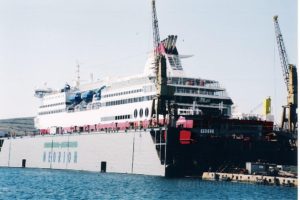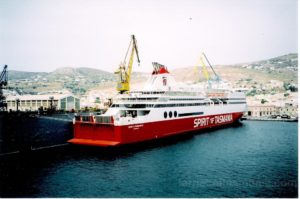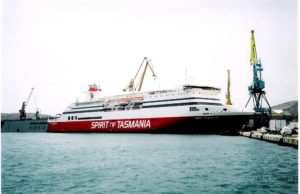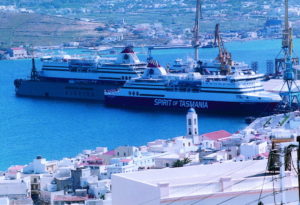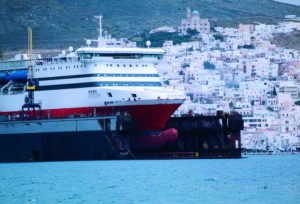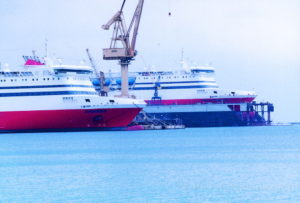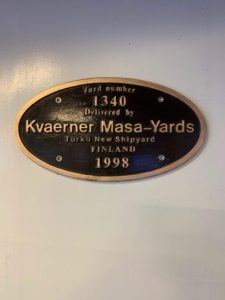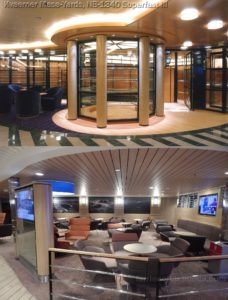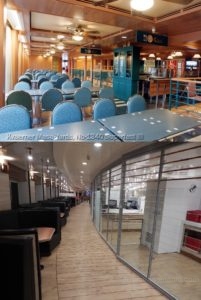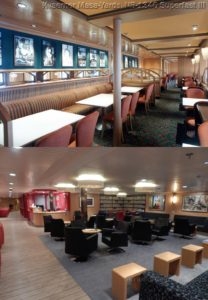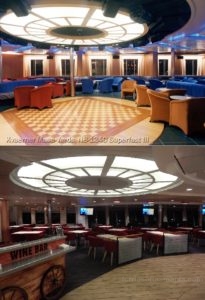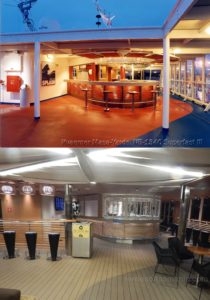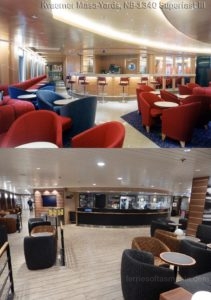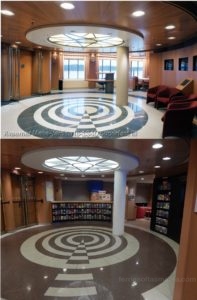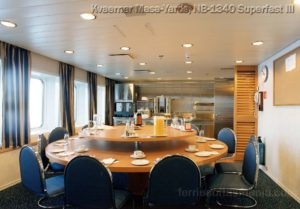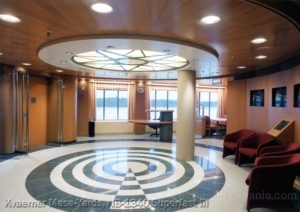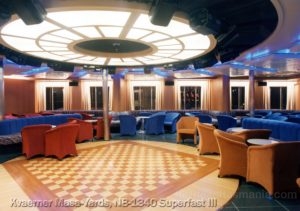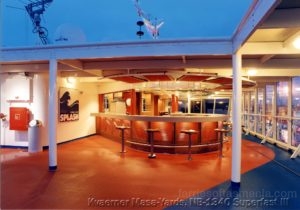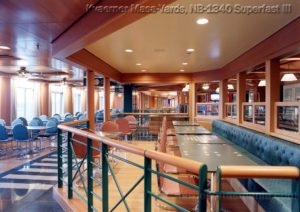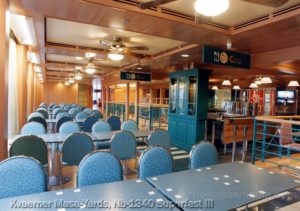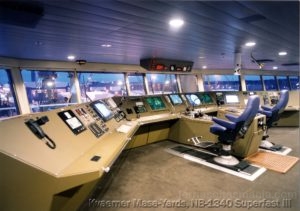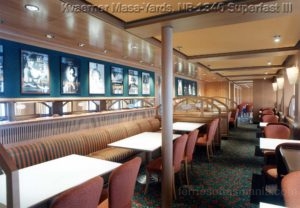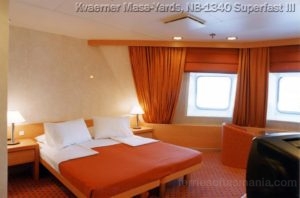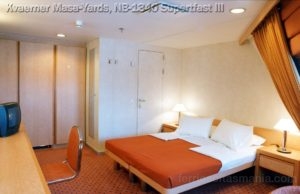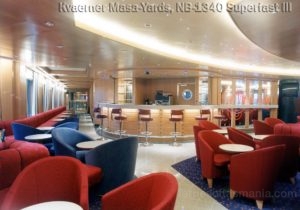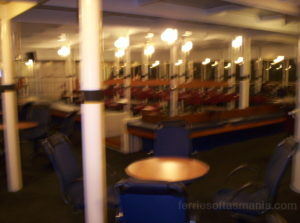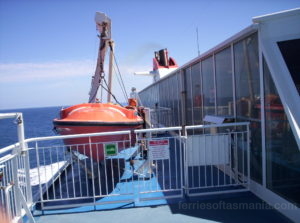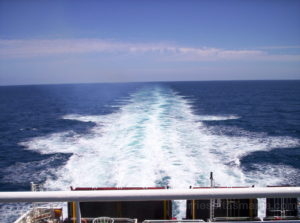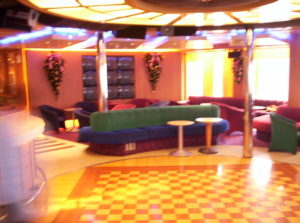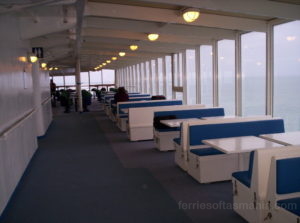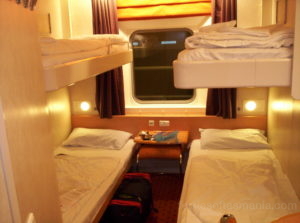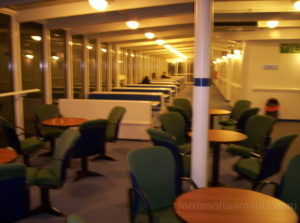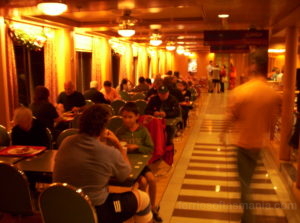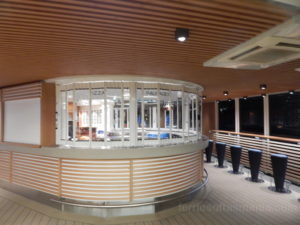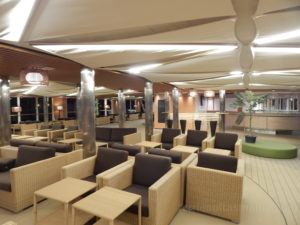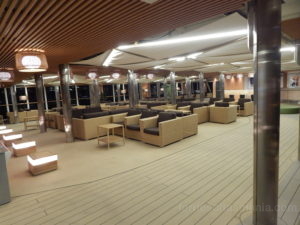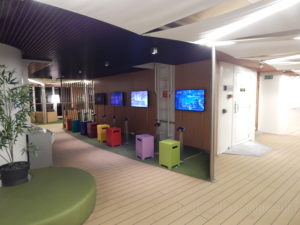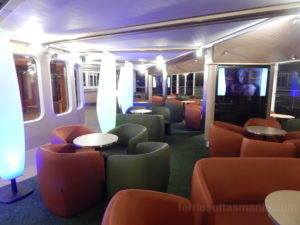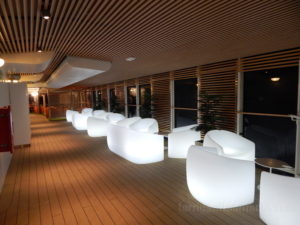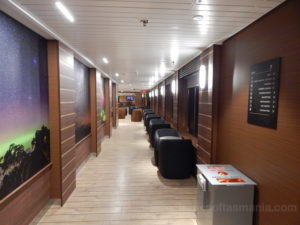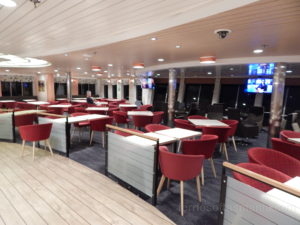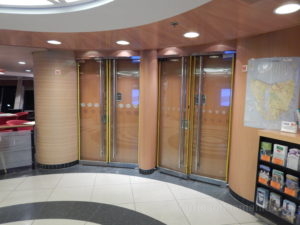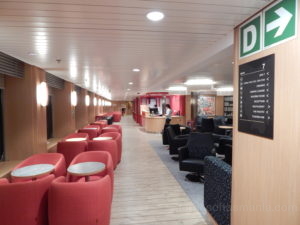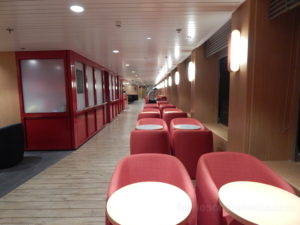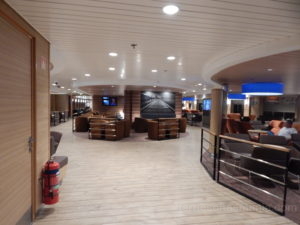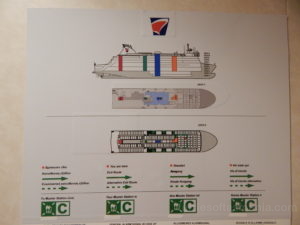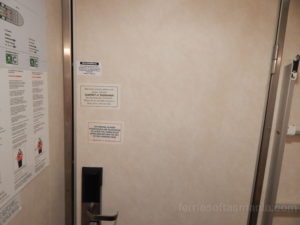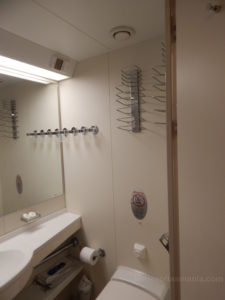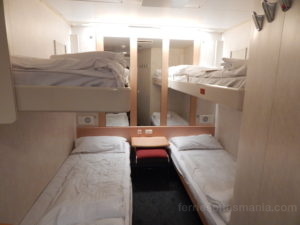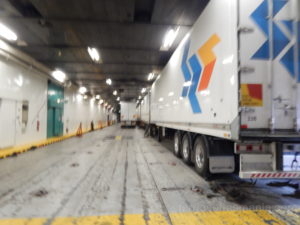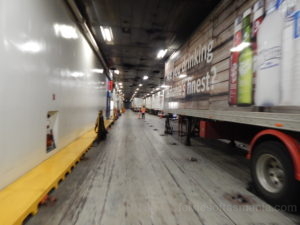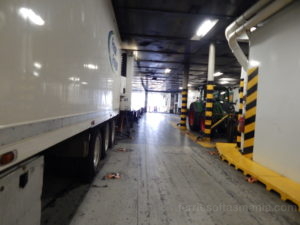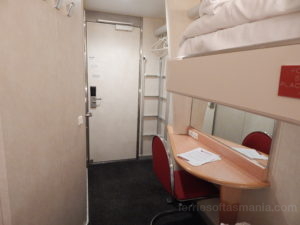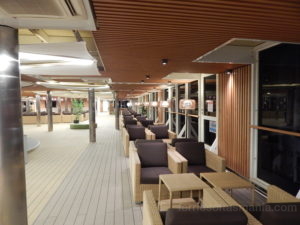
Photo: © Mitchell Bruce
Builder: Kvaerner Masa-Yards, Turku, Finland.
Year of build: 1998
Ship yard number: 1340.
IMO Number: 9158434
Call sign: VNSZ
Length: 194.33m.
Width: 25.00m.
Daft: DWL 6.4m / Scantling: 6.55m.
GT/ NT / DWT. 29,067 / 11,246 / 5,650t.
Main engines. Four Wärtsilä Sulzer 16ZAV40S Diesel.
Power rating: 42240 kW.
Gear ratio: 510 rpm to 147 rpm.
Service speed: 28.5 knots
Passengers capacity: 750 beds in 222 cabins.
1400 with deck passengers.
Cars: 500
Trailer deck lane meters: 1,852m.
Total Lane meters: 2,565m
Spirit of Tasmania II was constructed at Kvaerner Masa-Yards in Turku, Finland as Superfast III for Greek company Attica Enterprises, subsidiary Superfast Ferries. Superfast Ferries had began operations linking Greece with Italy across the Adriatic sea in 1995 with the Superfast I &II. The first pair, with a speed of over 27 knots, revolutionized the service and the speed that ferries sailed at throughout parts of Europe in general. Cutting ten hours off, compared with other ferry lines. Owing the the success of this, Attica Enterprises wanted to place an order for an additional two ferries. Financial troubles at the parent company, Bremer Vulkan of Schichau Seebeckwerft, who had built the first Superfast pair (coincidentally the first Spirit of Tasmania also) meant the option for a second pair could not be fulfilled. This left them to tender it out to a few ship yards in Northern Europe. Kvaerner Masa-Yards were successful in their tender, offering a construction price considerably lower than normal, due to receiving subsidies from the Finnish government. Also making a loss on the builds because the yard was very quiet at the time, and needed to keep their staff employed. The contract price was USD $200 million for both ferries.

Photo:© Costas Sarlis
Superfast III, along with her sister needed to have an increase in speed over the first pair in order to offer a 7 day, year round schedule. They needed to cross in 19 hours, as opposed to the 20 taken by the first pair. This required an optimized hull form compared with Superfast I & II. They also went for more powerful engines, in the form of four Sulzer 16ZA40 constructed in France by NSD. With an output of 10,560kw (14,155 BHP) each. Superfast III achieved over 30 knots on sea trails.
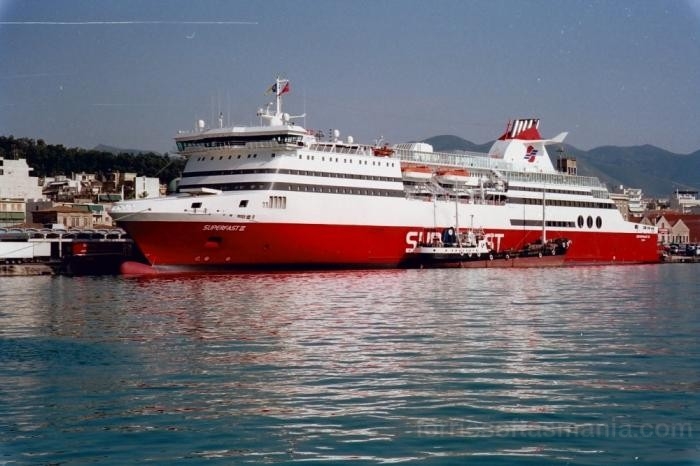
Photo: © Proud Ionian, shipfreinds.gr Used with permission.
12/2/1998 Superfast III was handed over to Superfast ferries in Turku. She set sail for Piraeus, Greece, going via Kiel and Amsterdam for open days. Once in Piraeus she had an open day there also. During the night of 25/2/98 she sailed for Heraklion on the island of Crete, setting a voyage record of 5 hours and 50 minutes. Staying there for a promotional visit, as at the time Superfast wanted to start sailing on the Piraeus – Heraklion line, but the Greek ministry never granted them permission. 16/3/98 she commenced her trade of sailing from Patras (Greece) to Ancona (Italy)
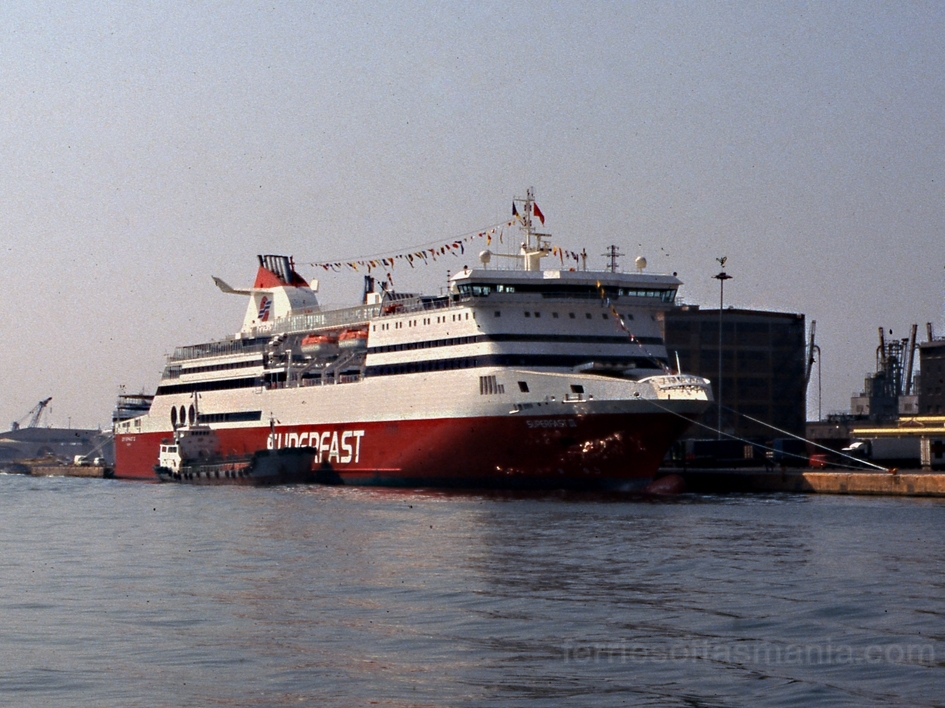
Photo:© T.S.S Apollon, nautilia.gr Used with permission.
On 1/11/1999 approximately 45 mins out from Patras, bound for Ancona, a fire broke out in the main garage deck (3). It is believed the fire started in a reefer unit in the garage. The designated fire fighting crew along with the ships drenching system put the fire out after several hours. The 307 passengers and most of its 106 crew were evacuated from the ship via life boats and picked up by other ships in the area who came to to the aid of Superfast III. She sailed back to Patras under her own power, where investigators come aboard. Unfortunately there were 14 dead bodies found in the garage, beveled to be Kurdistan refugees who were stowaways. The investigation was critical of the crew, response time and handling of the situation. Superfast III proceeded to Hellenic Shipyard for emergency repairs, before heading for Bloom + Voss ship yard in Hamburg, Germany. During the repairs 900 tons of steel, 70km of cable was replaced, also the internal tilting MacGregor ramp between decks 3 and 5 was replaced. A considerable amount of hydraulic systems had to be repaired, Some public spaces needed to be refurbished due to damage also . The cost was approximately USD $26 million. The work took 76 days. Superfast III sailed back to Greece, recommencing her run between Patras and Ancona 3/3/00. After the delivery of the next Pair (Superfast V and VI) Superfast III along with her sister were deployed on the Patras – Igoumenitsa – Ancona route. She remained on this line until her sale to TT-Line in may of 2002.

Photo:© lissos, Collection. nautilia.gr
Superfast ferries were due to take delivery of the newly constructed Superfast XI and XII from Flender werft ship yard in Germany, for the summer season of 2002. This left them with over capacity on the Adriatic lines. Under preforming routes in the Baltic at the time probably impacted the decision to sell an earlier pair of their ferries. Initially they wanted to sell the original pair, Superfast I & II. The first pair were less desirable to TT-Line for several reasons, a few being that they did not have enough crew cabins for each crew to have their own cabin (Australian maritime union condition), the escalator was on the starboard side, when both Melbourne and Devonport require port side docking. So Superfast Ferries agreed to sell to TT-Line the newer, faster and generally more suitable Superfast III & IV for AUD $290m, making a profit on the original construction price. In the weeks prior to the hand over, TT-Line sent a captain and their chief engineer to observe and become familiar with the operation of the vessels before the handover.

Nautilia.gr collection.
On the 10/5/2002 Superfast III was handed over to her new owners, TT-Line in Patras. She sailed for the Neorion Shipyard, on the Greek island of Syros where, along with her sister she was dry docked. She was also repainted into Spirit of Tasmania livery and renamed Spirit of Tasmania II. Once finished at the ship yard, Spirit of Tasmania II set off for the long voyage to Australia in the afternoon of 6/7/02. She passed through the Suez Canal, red sea, Indian ocean, calling at Colombo for Bunkers. Then onto Fremantle in Western Australia, arriving 24/7/02 for Bunkers. Once fueled she headed across the great Australian bight bound for Hobart. She, along with Spirit of Tasmania I which had had caught up (She left a day behind) arrived at the mouth of the Derwent river at 9:30am on 29/7/02 and docked in Hobart an hour later. Both ships and their crews were welcomed by the then Premier of Tasmania, Jim Bacon and his deputy Paul Lennon.

Scan: Mitchell Bruce collection, Examiner Newspaper.
Whilst docked in Hobart they had some final touches put in place, and prepared for service. On 11/8/02 an open day was held, where people came onboard to inspect the vessels. The Spirit of Tasmania II, along with her sister departed Hobart and sailed to Melbourne, arriving 14/8/02. Open days were held 17th & 18th of August, with over 10,000 people inspecting the sisters. On the morning of 1/9/02 the original Spirit of Tasmania arrived in Melbourne for the final time. After discharging her cargo and passengers, Spirit of Tasmania and Spirit of Tasmania II swapped sides of station pier, with the Spirit of Tasmania being laid up out of service, and Spirit of Tasmania II ready to load for her maiden voyage.
Spirit of Tasmania II departed Melbourne at 9pm 1/9/02 under the command of captain Jim Lewis, deputy premier Paul Lennon was onboard.
She arrived in Devonport (Home port) for the first time at 6am 2/9/02 to media coverage.

Photo:© Mitchell Bruce
13/10/02 whist docked in Melbourne, a violent gust of wind hit, and the vessel broke some of her mooring lines. A tug was quickly on hand to push her back alongside. A vehicle waiting to board received minor damage. The Ship departed 4 hours late. This brought about some changes in procedure and a small modification to allow more mooring lines to be used.
On the night 18/4/04 on a crossing from Devonport to Melbourne, a passenger jumped overboard in the presence of a security guard and the ships nurse who were trying to calm him down. The alarm was raised and the ship contacted Australian authorities immediately. The Spirit of Tasmania II initiated the search, followed by three helicopters and HMSA Melville. She searched the area for over 10 hours looking for the passenger with all her searchlights, zigzagging all night. After 10 hours Spirit of Tasmania II continued her voyage to Melbourne, arriving 10 hours late. Sadly the passenger was never found.

Photo:© Mitchell Bruce
In March 2015 renovations aboard the Spirit of Tasmania II commenced. The contract was awarded to a UK based company, Trim line.
Some of the work was done whilst the ship remained in service. They utilized some local Tasmanian contractors to complete the work, but many were Trim line employees from the UK on 457 Visas, which did cause a little controversy. (Because TT-Line is state owned) Local Tasmanian ship builder, Incat provided some labor also. The designer was Richard Nilsson of Figura Sweden, who has designed many northern European ferries interiors for upgrades and refurbishment. The bulk or the work was done in Sydney when the ship was dry docked for two weeks for annual maintenance at Garden Island, during August of 2015. The cost was AUD$31.5m for the Spirit of Tasmania II and her sister. After the renovation, Spirit of Tasmania II, along with her sister had displayed on the sides “THE NEW” above Spirit of Tasmania to create interest in the ships.

Photo:© Mitchell Bruce
On 13/1/16 Spirit of Tasmania II was docked at station pier. It had been a very hot day in Melbourne, over 45c. A cold front was approaching. At 17:52 strong wind gusts of over 60 knots hit the ship, causing all the stern lines to part. 9 of the 11 lines snapped, leaving only the breast and head line intact. (two on the bow) The vessel then came parallel to St Kilda beach. The crew quickly started the ships engines and thrusters so she didn’t run aground. The nearby St kilda beach was evacuated by police, in fears the ship might have come up the beach. (A bit silly, since that would have been impossible) Tugs arrived shortly after and pushed Spirit of Tasmania II back along side. By 19:05 the ship was once again tied up alongside. The indecent caused significant damage to the shore infrastructure and the ship. When the ship had pivoted, the lower bow ramp slid across and dropped off the wharf, leaving it hanging over the bulbous bow. As the ship continued to turn, the end of the lower bow ramp (Fingers) swung under the wharf, damaging two wooden piles below the wharf apron. This bent the ships bow ramp. The upper link span detached from the ship’s bow mount, and jammed between the bow bulwarks. As the ship continued to turn, the link span twisted away from the bow and hung down.
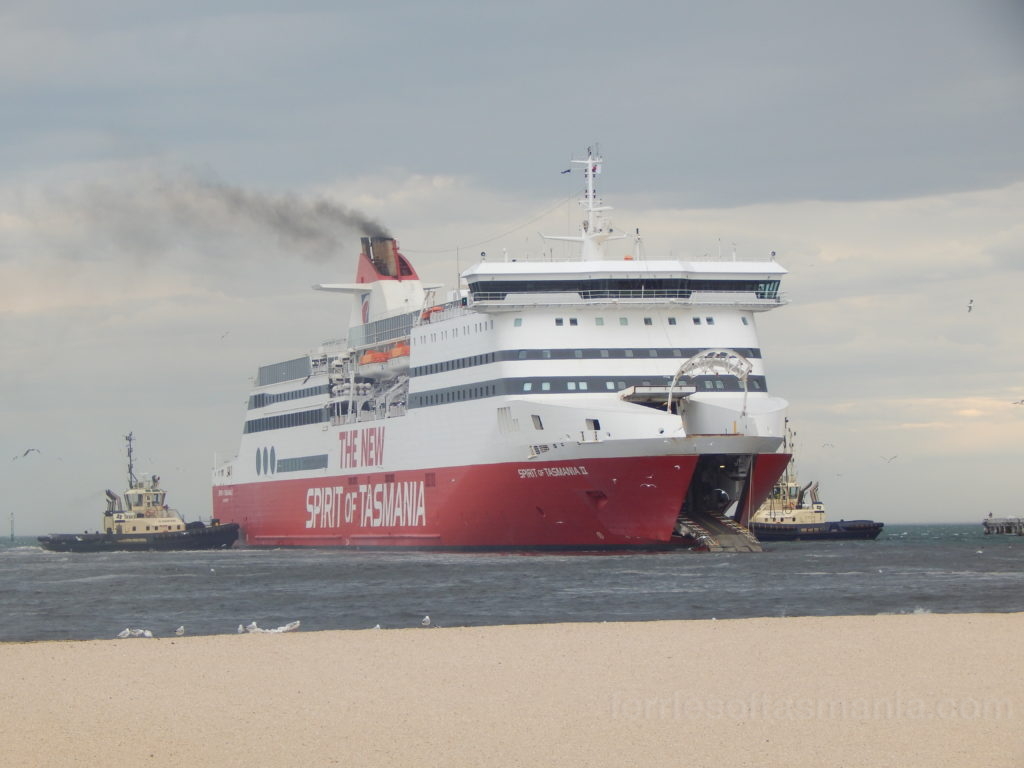
Photo:© Mitchell Bruce
The ship was unable to unload any passengers cars or trucks. Passengers who were to sail were offered accommodation onboard overnight. Passengers who’s car had not yet boarded could leave them on the pier. In the morning it was announced the ship would not be sailing for some days, as the damage was too extensive to her bow ramp. Spirit of Tasmania II had ran her engines all night, as a precaution. The next morning passengers who’s cars weren’t onboard disembarked. But then the ship had to turn around and dock stern in at station pier to unload the cars and trucks. She then moved to the outer birth to allow Spirit of Tasmania I to dock, many hours late. There were many passengers disrupted by this, as it happened at the busiest time of year for the ships. Spirit of Tasmania I tried to accommodate the extra passengers by operating extra day sailings, but many were left with no way to Tasmania or back as it was already sailing close to capacity. Spirit of Tasmania II resumed service four days later after temporary repairs to the bow ramp were completed, (Parts had to come from MacGregor in Europe) and inspections by several authorities to give the all clear to resume sailing.
In a sheer coincidence I was to board the Spirit of Tasmania II that night with my car and sail to Tasmania. I was able to catch some photos of the incident which can be seen in the gallery.

Photo:© Mitchell Bruce
On 3/5/2016 Spirit of Tasmania was approaching the entrance of the Devonport channel during heavy weather. During final approaches the captain made the decision to abort, ordering the ship to turn to starboard with heavy winds blowing on that side also. The ship consequently listed heavy to port causing significant damage in the vehicle decks, with many trailers breaking their lashings and falling against other trailers. Some cars were also damaged. Once docked in Devonport cranes were brought in to lift the fallen trailers back up.
22/10/22 Spirit of Tasmania II moored for the last time at Station Pier at around 9am. That night at exactly 7:30PM she let go of the mooring lines and departed the Pier for the last time, to much fanfare.
On 24/10/22 She docked for the first time (Commercially) at the new terminal in Geelong.

